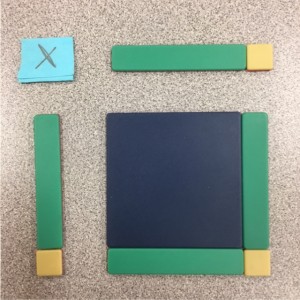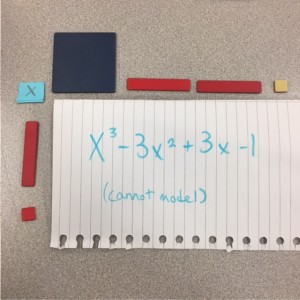Month: November 2016
November Reflection
What are some things you have learned and/or tasks you have accomplished this month? (Use videos, pictures, upload materials etc. as evidence of learning in your blog)
Not necessarily this month, but since September I’ve participated in the Grade 9 Digital Bootcamp (September 6th) and the CUEBC Conference held at Riverside (October 21st). I’ve also put in hours at the WAVE, and helped numerous teachers with Office 365.
At the Digital Bootcamp, I was in the gym going around and helping students with their Windows devices. I answered questions and troubleshot various problems independently. At the CUEBC Conference, I escorted presenters to the rooms where they would be presenting, and helped them set up their devices to the projectors, Wi-Fi, and speakers. I probably met about a dozen presenters, and helped countless other people attending the conference with their own devices and where to find the rooms. (More rave reviews: here)
In general, I learned a lot about how I should be approaching questions about technology to teachers and students. I’m pretty good at it, but it’s a little tricky to explain how to do things when the person you’re helping just wants you to do it, instead of them learning how to do it themselves. It was pretty funny taking over my English teacher’s computer though (“I have no idea Sara you do it.” Later, she raved that I was “a computer genius” to a colleague at the CUEBC Conference.)
What aspects of your passion project are working? Explain why.
My passion project right now is being on the Makerspace council. We’ve only met once so far, but we had a really good meeting filled with lots of discussion about what the purpose of the Makerspace at school should be and what we need to know before we begin designing the library renovations.
What aspects of your passion project are challenging? Explain why.
It was a little challenging to understand what some people were thinking about the Makerspace at the meeting. We all came from very different backgrounds (there were only three students at the meeting – most were educators), so we had different definitions about what a Makerspace is, and had different objectives about what we would like it to be.
What steps did you take to overcome these challenges / what adjustments did you need to make?
Eventually, the “spouting ideas to put on the board” method dissolved until we were having long, in-depth discussions about various topics involving the Makerspace, like how students would probably use it and amazing innovations we could service at Riverside. It was cool to be on that level of conversation with people who I would’ve only talked about SLC with, besides.
Is there anything you can do improve? (with your approach to the project, or altering the project)
I might put together some of my own ideas for the Makerspace, and bring them up at the next meeting. However, most of the planning is out of my hands.
What is the next step, when will it be completed?
The next step is following up with Mr. Ciolfitto. As for the second question, I have no idea. No one really knows.
(I apologize for the lack of imagery. There aren’t many photos about my Tech Team stuff – I’m elusive when it comes to cameras. My hair always looks awful!)
Math and Philosophy
I just really like math class when we get to discuss mathematical philosophy. I think about these kind of things a lot (I have a couple friends in which our entire relationship is based on our mind-blowing conversations, some of which happen at two o’clock in the morning).
I could go on and on and on about all the questions we discussed today and all the concepts that blew our minds. But I really like the Discussion part – we were given a lot of time to just talk through our ideas, and I absolutely love that because it’s how I make everything make sense in my head, by verbalizing it. I tried my best to include everyone in the conversation, but I admit, there were certain points where I would get really excited about what was being said and I would want to respond to that thing as soon as possible.
Math: Not Quite As Scary As You Think It Is
Try Me, Mendel
If you thought genetically engineering a human genome was a little freaky, you’re right. If you think it’s still cool, you’d also be right.
Genetic engineering is exactly what you think it is – the engineering of genes. More specifically, it’s directly changing a genome to make a new or edited organism. This can be accomplished through molecular cloning (cloning of the desired DNA strand, and injecting the copied DNA into the organism so it replicates itself), or gene targeting (removal of a gene, adding a gene, or introducing a point mutation – like purposefully inducing a genetic mutation), but there is now a much more precise way to genetically modify an organism. It’s called CRISPR, and it is being widely regarded as a revolutionary development in science. The thing is, scientists didn’t invent it.
CRISPR stands for “Clustered regularly interspaced short palindromic repeats”, and it is naturally occurring. It consists of prokaryotic DNA with repeating base sequences, and this initially puzzled scientists, until they realized that they have “spacer DNA”, which means that all these sequences are the genetic makeup of something – it was later discovered that this “something” was viruses. Cells were found to be keeping a sort of database of the DNA of certain viruses, and using proteins (Cas – CRISPR-associated proteins) to target the virus when it entered the cell.
CRISPR takes certain sections of a virus’ DNA and turns it into RNA, which Cas then takes control of and carries it around the cell. If the protein encounters something that matches the RNA, Cas cuts it into two so it cannot replicate itself within the cell. Scientists mostly focus on Cas9, which is the associated protein of strep throat. Cas9 can recognize genetic sequences twenty bases long, so biologists can feed it the RNA of any desired gene and it can go and copy and paste it anywhere you want in the genome.
This technique has been recently used in mice. Gene engineering mostly consists of isolating genes and messing with them a bit, to see what effect they  really have on an organism. Normally, to isolate a gene, scientists would have to go through three generations of mice to get the desired phenotype, but now with CRISPR, they need only insert the gene into an embryonic stem cell and it takes one generation to see the gene. It’s also being proposed to be used in fighting inherited diseases – when you inject the copy of a certain gene, but it is non-functional, embryonic stem cells will adopt the new gene and replicate that. The generation born will have a “knocked-out” version of the gene, meaning it does not work. Using CRISPR, scientists may be capable to do the same thing with much more precision and efficiency than ever before.
really have on an organism. Normally, to isolate a gene, scientists would have to go through three generations of mice to get the desired phenotype, but now with CRISPR, they need only insert the gene into an embryonic stem cell and it takes one generation to see the gene. It’s also being proposed to be used in fighting inherited diseases – when you inject the copy of a certain gene, but it is non-functional, embryonic stem cells will adopt the new gene and replicate that. The generation born will have a “knocked-out” version of the gene, meaning it does not work. Using CRISPR, scientists may be capable to do the same thing with much more precision and efficiency than ever before.
CRISPR is still in early development, but with more testing, it is definitely possible to witness some incredible advancement in science. However, any form of genetic engineering has always been under mass scrutiny. In 2015, scientists at major academic establishments called for the world to place a temporary ban on editing inheritable human genomes. Also, the term “genetically modified organism” has become almost synonymous with genetically modified food and crops, which are subject to ridiculous amounts of debate, mostly due to GMO-manufacturer Monsanto’s suspicious and unethical activity. CRISPR is being proposed for certain forms of gene therapy (genetic engineering in humans for clinical use), but this is even more controversial than the food. It was only in 2012 that the first form of gene therapy was permitted world-wide after the European Commission cleared the treatment, Glybera, for clinical use. (Glybera compensates for a rare genetic disease called lipoprotein lipase (LPL) deficiency, which can cause severe pancreatitis. Glybera puts the LPL gene into the cell, and it acts as a free-floating DNA strand.)
Despite obvious benefits of using CRISPR and other forms of genetic engineering, it is virtually impossible to get anything out to the public. (The biggest genetic innovation that has hit the market so far is probably GloFish or blue roses.) American laws about gene engineering haven’t been updated since 1996, and much has changed since. These regulations were written with only genetically modified bacteria in mind (genetically engineered insulin made it onto the market in 1982), and it was incomprehensible that we could edit the human genome with the simple insertion of isolated RNA. CRISPR still isn’t perfect, but more research still needs to happen. And that doesn’t just apply to this specific technique – when it comes to gene engineering, anything from genetically modified food to certain forms of cancer research are up for intense debate.
Although, it is still important to remember that we’ve come a long way, and it’s amazing what humans are capable now. The more we understand our genes, the better we can make ourselves. I’m not talking edited babies, with chosen hair and eye colour – I’m thinking more along the lines of completely taking the genes that cause negative mutations in humans, such as Alzheimer’s and blindness, out of the human gene pool.
Now imagine if Mendel could’ve seen that.
My research:
Sources:
https://en.wikipedia.org/wiki/Genetic_engineering
http://gizmodo.com/everything-you-need-to-know-about-crispr-the-new-tool-1702114381
https://www.technologyreview.com/s/535661/engineering-the-perfect-baby/
Modeling Polynomials
1.
2.
When squaring polynomials, it’s a good idea to write out the whole equation, so you don’t have any exponents. This makes it easier to see all the operations you have to do. Multiply the first value of the first bracket by the first value in the second bracket, then the second value. Then you do the same thing, but with the second value of the first bracket.
3.
With equations like this, you can use the same distributive property used in the previous questions, but you just have to be careful with the signs – it’s really easy to get a completely different answer because you forget to put a negative sign in there.
4.
For powers of three, you write the whole thing out, then do the first part, which is the same as squaring a polynomial. Then, you multiply it by itself again! It’s just taking the previous two strategies into one question. Take it step by step, and it’s not nearly as scary as it looks!







